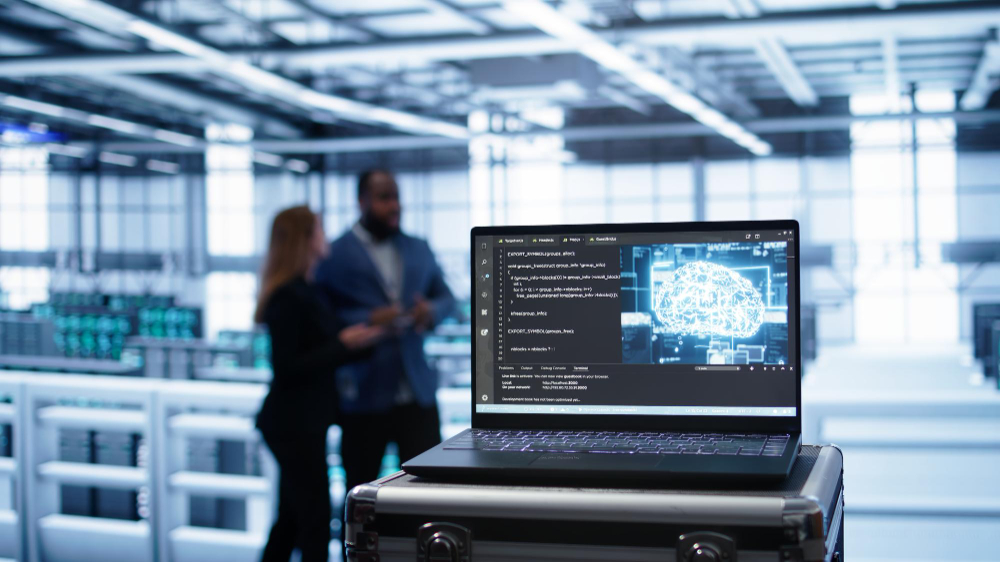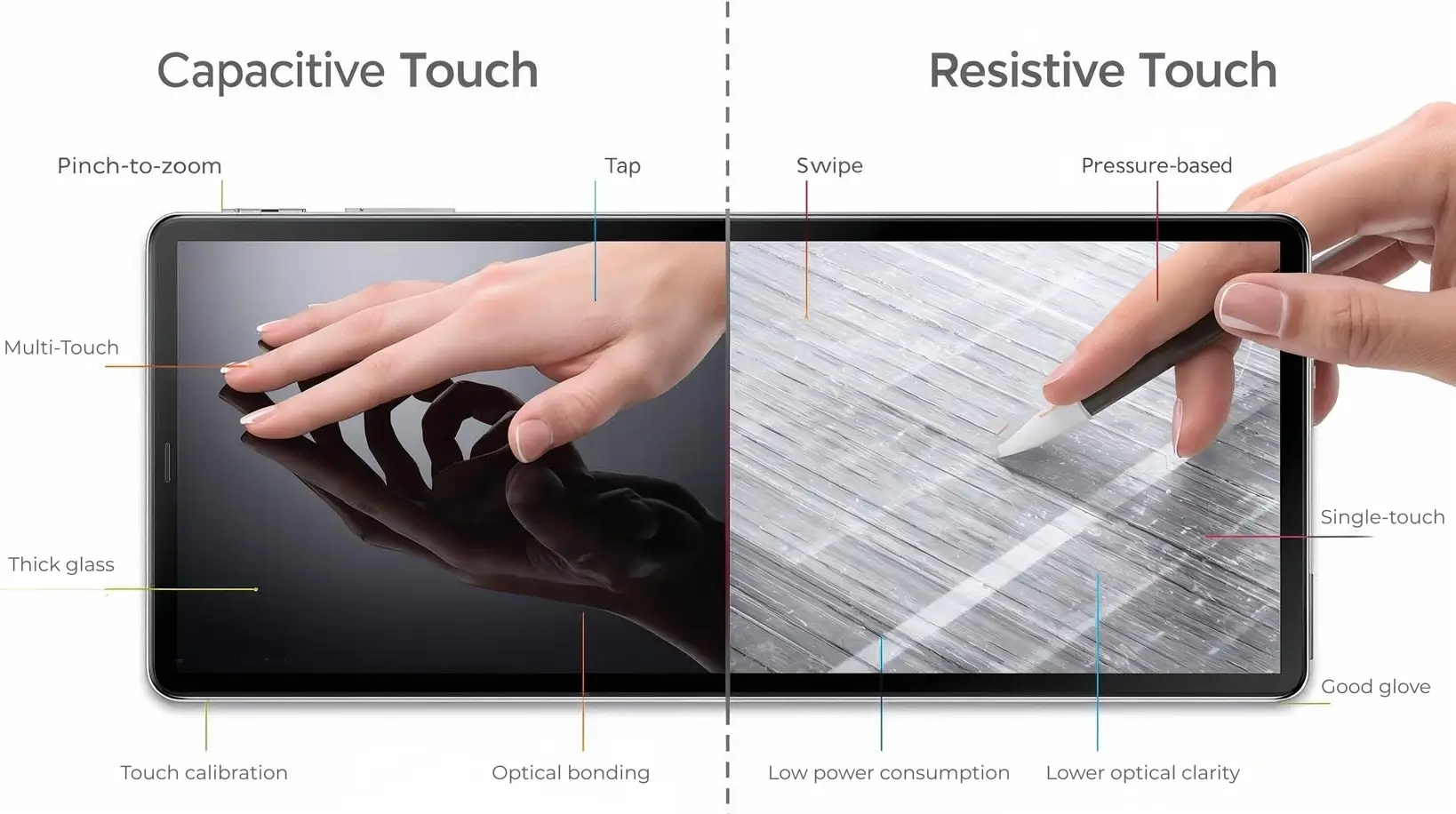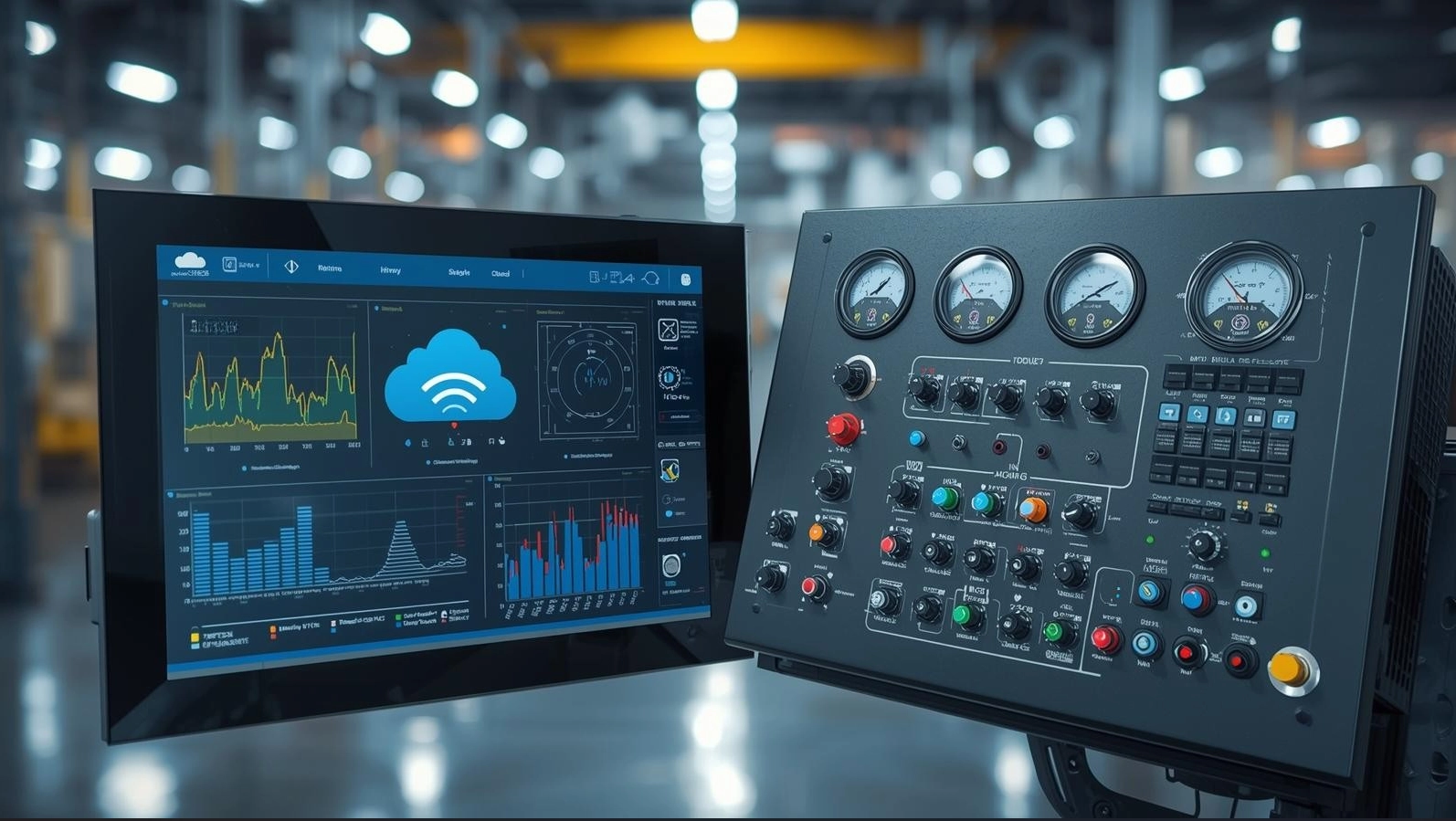The convergence of AI and IoT in the AIoT era has redefined the role of industrial PCs across manufacturing, energy, healthcare, and transportation sectors. From fanless embedded computers to high-performance box PCs, these systems offer resilient designs for harsh environments, integrating AI computing, real-time data acquisition, and IoT connectivity. With Intel® processors, ruggedized structures, and comprehensive I/O options including USB, Ethernet, and IoT gateways, these solutions empower industries with automation, supervisory control, and edge computing capabilities. This article explores how industrial PCs contribute to digital transformation by enabling smarter, safer, and more efficient industrial processes.
Why Industrial PC are Key to AIoT Integration for Automation and Edge Computing
In the AIoT era, industrial PCs (IPCs) have become essential infrastructure for enabling the integration of AI and IoT technologies into modern automation environments. Compared to conventional IT devices, fanless industrial computers offer the durability, stability, and flexibility required to meet the demands of industrial environments that involve harsh conditions, extreme operating temperatures, and continuous 24/7 operation.
The adoption of AIoT in manufacturing and industrial sectors has been driven by the increasing demand for real-time data processing, smarter decision-making, and enhanced operational efficiency. Unlike traditional office-grade hardware, industrial embedded computers and fanless industrial PCs, often equipped with Celeron processors, are designed specifically for rugged use. These systems are equipped with DIN-rail or rackmount chassis for easy integration into control cabinets or production lines, offering protection against shock and vibration, dust, and humidity.
The compute performance of today’s industrial PCs is further enhanced by the integration of Intel® processors, including options ranging from Celeron® to Xeon®. These systems deliver sufficient computing power for edge computing tasks, supporting applications from machine vision to AI inference at the edge, particularly when powered by Intel processors. With diverse I/O configurations—such as multiple USB, Ethernet, DisplayPort, and serial ports—industrial PCs ensure connectivity with legacy devices while embracing modern IoT gateways and protocols.
One of the most significant advantages of fanless industrial PCs is their ability to operate reliably in harsh environments without active cooling. This fanless design not only minimizes failure points but also extends system longevity by reducing exposure to airborne contaminants. These systems maintain stable performance across wide operating temperature ranges and are ideal for deployment in extreme environments like outdoor control boxes, energy plants, or transportation hubs.
Industrial PCs also play a pivotal role in enabling edge computing within IoT edge architectures. By embedding AI-driven analytics directly at the data source, these systems reduce latency and enhance real-time responsiveness, eliminating the dependency on centralized cloud processing for time-critical operations. This decentralized approach benefits industries seeking to minimize downtime while optimizing production through supervisory control and data acquisition (SCADA) systems.
In conclusion, fanless industrial computers are more than hardware—they are key enablers of AIoT strategies. With robust designs, Intel®-powered performance, and flexible connectivity, they offer a future-proof foundation for industrial organizations striving for digital transformation through automation, real-time data acquisition, and edge computing.
Learn more about our Panel Mount Fanless Touch Panel PC, designed for seamless integration into industrial AIoT environments.
How Embedded Systems and Fanless Industrial PCs Power AIoT Applications in Smart Factories
Why Fanless Embedded Systems Matter in Harsh Industrial Environments
The rise of AIoT in smart manufacturing would not be possible without the contribution of embedded systems and fanless industrial PCs. In environments characterized by dust, vibration, moisture, and extreme temperature ranges, traditional computing systems fail to deliver the reliability required for industrial automation. This is where fanless industrial computers and embedded box PCs play a critical role, combining durability, energy efficiency, and seamless integration for real-time operations.
Unlike standard IT devices, fanless designs eliminate the need for mechanical cooling, thus preventing system failures caused by dust or debris buildup in harsh environments. This passive cooling approach also reduces downtime and maintenance frequency, which is crucial for industries operating around the clock. Furthermore, DIN-rail, rackmount, and compact form factors ensure these systems are easy to integrate within confined spaces such as control cabinets, factory floors, and machinery housings.
Industrial embedded computers are equipped with diverse I/O configurations to accommodate various IoT and automation applications. Common interfaces include Ethernet, USB 3.0, 2 serial ports, DisplayPort, and multiple I/O ports for sensors and legacy equipment. These features provide the connectivity necessary for data acquisition, supervisory control, and integration with modern IoT gateways. Some systems even support AI-specific modules, such as GPU expansion, making them suitable for tasks like machine vision, HMI, and edge AI inference.
Below is a comparison chart highlighting typical features found in fanless industrial PCs across different application scenarios:
| Feature | Light-duty Automation | General Industrial Use | AIoT / Smart Factory |
|---|---|---|---|
| CPU | Intel® Celeron® | Intel® Core™ i3/i5 | Intel® Xeon® / Edge AI SoC |
| I/O Ports | USB / RS232 / Ethernet connectivity options are essential for integrating panel PCs and industrial monitors into existing systems. | USB 3.0 / COM / DisplayPort | USB 3.0 / Ethernet / GPU-ready |
| Mounting Options | Panel / Desktop | DIN-rail / Rackmount | Embedded / Rackmount |
| OS Support | Linux / Windows | Linux / Windows | Linux / Windows / Azure IoT Edge |
| Application Example | Basic HMI | SCADA / Control Systems | Machine Vision / AI Inference |
| Cooling | Fanless | Fanless | Fanless |
| Environment | Mild | Rugged Industrial | Harsh / Extreme Environments |
With increasing demand for real-time, AI-driven decisions at the IoT edge, these industrial computers serve as reliable platforms for bridging the gap between cloud-based systems and on-site operational technologies. OnLogic and other leading IPC manufacturers emphasize robust materials, industrial-grade chassis, and wide operating temperature specifications to ensure consistent performance, even in extreme environments where heat, moisture, or vibration are everyday challenges.
Through these embedded systems, companies achieve faster digital transformation while maintaining precise control over their industrial process and automation workflows. Integration with supervisory control and data acquisition (SCADA) platforms further enhances their operational visibility, ensuring that AIoT strategies deliver tangible improvements in efficiency, safety, and connectivity.
Discover more about our Industrial Automation Solutions and how they help companies achieve operational excellence with AIoT.
Practical Applications of AI and IoT Integration through Industrial PCs
Real-World AIoT Scenarios with Industrial Computing
The integration of AI and IoT into industrial operations is no longer theoretical—it is already transforming how factories, utilities, and transportation systems operate. Industrial PCs (IPCs) serve as the backbone for these AIoT solutions, providing reliable compute power and robust connectivity to support real-time data processing at the edge.
In manufacturing, AIoT applications powered by embedded computers and fanless industrial PCs enable predictive maintenance through AI models that monitor machine performance via data acquisition systems. These computers interface directly with machinery through USB, Ethernet, or IoT gateways, gathering vital data for supervisory control and data acquisition (SCADA) platforms. This proactive approach minimizes downtime and extends equipment lifecycles.
In the energy sector, industrial embedded solutions support smart grid management by providing real-time analytics on energy flow and equipment status. Rugged fanless industrial computers ensure operational continuity despite harsh environments, supporting critical systems in substations or outdoor enclosures where wide operating temperatures are common.
Healthcare facilities also leverage industrial panel PCs and box PCs for AI-driven diagnostics and equipment monitoring. These systems process large volumes of medical imaging data locally, enhancing response times and reducing the need for cloud dependencies—a crucial advantage in time-sensitive scenarios.
The transportation sector benefits from AIoT through machine vision applications for automated inspection and monitoring. Industrial PCs equipped with GPU acceleration handle real-time image analysis, improving accuracy in identifying defects, safety issues, or operational inefficiencies, especially when configured with SSDs.
Below is a breakdown of key industries and their AIoT applications, highlighting the critical role of industrial PCs:
| Industry | AIoT Applications | IPC Role |
|---|---|---|
| Manufacturing | Predictive Maintenance, AI Robotics | Edge Computing and SCADA Integration are enhanced by the use of industrial monitors and panel PCs. |
| Energy | Smart Grid Monitoring, Predictive Analytics | Rugged Edge AI Systems |
| Healthcare | Medical Imaging, Real-Time Diagnostics | Embedded PCs for AI Processing |
| Transportation | Fleet Analytics, Machine Vision, Infrastructure AI | Fanless PCs for Harsh Environments |
| Utilities | Remote Asset Management, SCADA | IoT Gateway Integration, Data Acquisition |
These hardware and software solutions offer scalability and flexibility through Intel® architectures, USB 3.0 ports, and advanced connectivity options such as Ethernet and IoT gateways. This infrastructure enables companies to deploy AI-driven technologies confidently across diverse and demanding industrial environments, supported by robust panel mounted solutions.
By embedding AI and IoT into their industrial control systems, organizations achieve greater efficiency, safety, and productivity—core objectives of digital transformation, particularly with the use of industrial monitors. Industrial PCs empower businesses to leverage real-time insights, transforming raw operational data into actionable intelligence, and securing a competitive edge in the AIoT era.
What to Consider When Choosing Industrial PCs for AIoT Integration?
Hardware, Software, and Connectivity Essentials
Selecting the right industrial PC for AIoT integration is a strategic decision that directly impacts the success of automation and edge computing deployments. The requirements of industrial environments—ranging from harsh temperatures to continuous real-time workloads—demand careful consideration of both hardware and software components.
At the hardware level, Intel® processors remain the industry standard for balancing performance and energy efficiency. Depending on the specific workload, manufacturers can choose between Celeron® for basic HMI applications, Core™ i3/i5 for general automation, or Xeon® CPUs for high-performance computing tasks such as AI inference, machine vision, and edge AI. These processors enable fanless designs by optimizing thermal output, which is essential for environments where cooling fans are prone to failure due to dust or contaminants.
Connectivity is another critical factor. A modern industrial computer should offer flexible I/O configurations, including USB 3.0, multiple Ethernet ports, serial interfaces (2 serial ports), and support for IoT gateways. This ensures compatibility with both legacy control systems and cutting-edge IoT applications. Additionally, integration with Azure IoT Edge and compatibility with Linux or Windows operating systems broaden deployment possibilities across industries.
TPM (Trusted Platform Module) integration enhances security, safeguarding sensitive data within industrial control networks. This is particularly important for infrastructure sectors such as energy, healthcare, and transportation, where data integrity and system availability are paramount.
When evaluating industrial PCs, attention should also be paid to the following aspects:
| Selection Criteria | Consideration | AIoT Relevance |
|---|---|---|
| CPU Performance | Celeron® (basic) to Xeon® (AI/Edge) | AI workloads, compute-intensive tasks |
| Connectivity | USB 3.0, Ethernet, Serial, IoT Gateway | Real-time data, machine interfaces |
| Operating System | Windows, Linux, Azure IoT Edge | Flexibility across platforms |
| Security | TPM 2.0, Secure Boot | Data integrity, compliance |
| Form Factor | Fanless, DIN-rail, Rackmount | Harsh industrial settings |
| Environmental Tolerance | Wide operating temperature, shock resistance | Continuous operation in extreme environments |
Furthermore, scalability is a key consideration. Industrial facilities often require systems that can evolve with technological advancements. The ability to customize your industrial PC—whether through expansion slots, modular I/O ports, or GPU upgrades—ensures adaptability to future IoT demands without the need for complete system overhauls.
Fanless industrial computers are particularly suited for demanding industrial environments, offering not only longevity but also consistent performance without mechanical wear points. This design aligns with the requirements for wide operating temperature ranges and rugged chassis needed in harsh environments.
In summary, selecting an industrial PC for AIoT deployment requires balancing performance, connectivity, durability, and security. These systems form the backbone of modern industrial automation strategies, enabling organizations to fully realize the benefits of digital transformation through seamless integration of AI, IoT, and edge computing technologies.
The Future of Industrial PCs in Driving Digital Transformation through AIoT
The Role of Industrial PCs in the Next-Gen Smart Manufacturing Revolution
As industries continue to embrace digital transformation, the role of industrial PCs within AIoT ecosystems will become increasingly strategic. Moving forward, these systems will serve not merely as operational hardware but as intelligent nodes that bridge the gap between data acquisition, real-time analysis, and decision-making at the IoT edge.
The demand for high-performance computing at the industrial level, powered by Intel Core processors, is growing, especially in sectors such as advanced manufacturing, energy management, and transportation infrastructure. These industries require robust hardware and software solutions capable of executing AI inference locally while ensuring seamless integration with enterprise systems and cloud platforms. Industrial PCs—particularly fanless and embedded systems—are uniquely positioned to meet these demands due to their reliability, scalability, and adaptability to harsh environments.
OnLogic and other leading brands continue to develop industrial embedded solutions that push the boundaries of what industrial PCs can achieve. With support for Intel® architectures, TPM security modules, and AI-ready GPU expansions, these systems are increasingly designed for complex edge AI workloads, enabling real-time insights and predictive analytics directly on the production floor.
In the future, industrial control systems will leverage these capabilities to enhance supervisory control and data acquisition (SCADA) platforms, optimizing operations from machine vision applications to HMI interfaces. Ethernet, USB, and wireless connectivity will further expand the flexibility of industrial PCs, allowing integration into both legacy systems and emerging 4.0 technologies.
These advancements will enable industries to shift from reactive maintenance models to predictive and prescriptive strategies. Data acquisition through IoT gateways will fuel analytics platforms capable of identifying patterns, preventing failures, and optimizing workloads in real-time. Industrial PCs will thus remain at the heart of AIoT architectures, ensuring that systems deliver reliable performance while enabling businesses to scale with confidence.
Looking ahead, customizable and scalable industrial PCs will empower companies to adapt rapidly to changing technologies and regulatory environments. These computers offer more than connectivity; they deliver actionable intelligence through seamless integration of AI, IoT, and automation—providing the foundation for the next generation of smart factories and digital transformation initiatives.
In conclusion, industrial PCs are not merely tools for computing power; they are strategic enablers for innovation, bridging AIoT applications with operational excellence and shaping the future of industrial systems worldwide.
Learn more about Beyond Info System and how we help global manufacturers achieve success through reliable industrial computing solutions.



